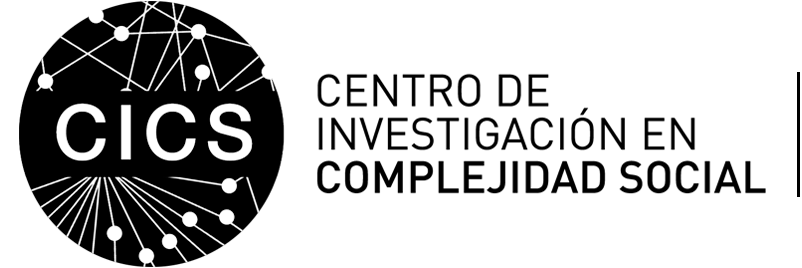[PAPER] NeuroCICS researchers have recently published a study that contributes to clarifying social difficulties in children with austistic spectrum disorders (ASD)
Monday, 25 February, 2019 | NEWS, PAPERSThe Autistic Spectrum Disorders (ASD) are considered one of the most complex neurodevelopmental disorders to understand. People suffering from autism spectrum disorders are characterized by difficulties that affect their social interaction and communication skills. In addition, they show restricted and/or stereotyped behaviors and interests.
Against this background, Patricia Soto Icaza, Psychologist at the Pontificia Universidad Católica, Master in Child-Juvenile Clinical Psychology at the University de Chile and PhD and Master in Neurosciences at the Pontificia Universidad Católica, together with PhD Pablo Billeke, researcher at Neurosciences Division of the Research Center in Social Complexity Sciences (CICS, as its Spanish acronyms) of the Universidad del Desarrollo, decided to carry out a research work related to autism in young children – as the doctoral thesis of the psychologist Soto Icaza -, becoming one of the few studies that exist with electroencephalogram in preschool children having this type of diagnosis. This investigation is very important since it allows to clarify the functioning and the importance of one of the precursors of the Theory of Mind (or mentalization), specifically the joint attention (JA), one of the central aspects to be able to diagnose the autism spectrum disorder. The prestigious Cortex journal took this article and published it recently.

Background
The Joint Attention is defined as the ability to share the interest in a common object with another person, as well as being a precursor of adult social functioning.
The relevance of being able to study the development of this ability lies in the varied scientific evidence that joint attention is crucial for the development of the capacity to attribute mental states to others (ie, mentalization or theory of mind), which it occurs at an early stage in childhood. However, the neural mechanisms involved in the development of mentalization are not so clearly defined.
In order to elucidate them, this research used a new experimental paradigm which allowed the child to initiate JA in a spontaneous way. Thus, non-invasive electroencephalographic (EEG) records were made in children between 3 and 4 years old while watching stimuli on a screen, and interacted with the researcher. This age range was chosen as the stage in which children begin to deal with more complex social problems using mentalization skills.
The tests were carried out in order to see if the neuronal activity that precedes (and eventually triggers) joint attention correlated with mentalization in children with typical development (TD), and whether this activity presented (or not) differences in children with autism spectrum disorder (ASD). Interestingly, both groups of children showed a number of joint attention initiation behaviors with comparable frequency, that is, in a similar proportion.
However, the children with typical development showed a greater amplitude of the potential related to fronto-central events, associated with the attentional network before the JA behaviors (Negative-central [Nc]). In other words, prior to the JA behavior, children with typical development presented an increase in oscillatory beta activity in the temporoparietal region, whereas children with ASD did not show it. One of the most interesting findings is that it was possible to observe that, in both groups, beta power correlated with mentalization, suggesting that this specific neuronal mechanism is involved in the process of mentalization during social interaction.
Autism was chosen since difficulties in JA and mentalization have been described as key features of autistic spectrum disorder (ASD).
The researchers say the relevance of this study lies in the fact that “through an interactive experimental paradigm, the evaluation of the neurodevelopment of social skills is considered at an age when children begin to reach mentalization skills”. Also, this is the first study including the evaluation of the moment that precedes and triggers (or not) the JA behaviors.
These conditions provide a suitable scenario for naturalistic, dynamic and precise interpretations of the results obtained. Likewise, the incorporation of syndromes such as ASDs contributes significantly to the understanding of the typical and atypical development of the neural mechanisms involved in social functioning, allowing both clinicians and therapists to direct their efforts towards early interventions which can improve social functioning .
The CICS researcher, PhD Pablo Billeke, says “this work was very important for us as a Laboratory, because Patricia was the first Doctorate student who graduated doing the thesis in our NeuroCICS Laboratory” and adds that “this is the first release of data extracted one hundred percent from our Laboratory, being the first step of our independence of data acquisition”.
Regarding the experience of working with such young children, Patricia Soto Icaza points out that it was a “wonderful and rewarding experience. It was very valuable to have the support of families, therapists and, especially, NeuroCICS”, because by using technologies such as the Geodesic electroencephalogram, it was possible to develop a much more friendly experimental approach for children between these ages. “This research is fundamental for social development at later ages”, concludes the researcher.

The Article
Authors: Patricia Soto-Icaza (a), Lorena Vargas (c), Francisco Aboitiz (a) and Pablo Billeke (b).
(a) Laboratorio de Neurociencias Cognitivas, Departamento de Psiquiatría, Centro Interdisciplinario de Neurociencias, Facultad de Medicina, Pontificia Universidad Católica de Chile, Santiago, Chile.
(b) Division of Neurosciences, Research Center in Social Complexity (NeuroCICS), Faculty of Government, Universidad del Desarrollo, Santiago, Chile.
(c) Luis Calvo Mackenna Hospital, Santiago, Chile.
Read the document here
The Journal
CORTEX is an international journal devoted to the study of cognition and of the relationship between the nervous system and mental processes, particularly as these are reflected in the behaviour of patients with acquired brain lesions, normal volunteers, children with typical and atypical development, and in the activation of brain regions and systems as recorded by functional neuroimaging techniques.


